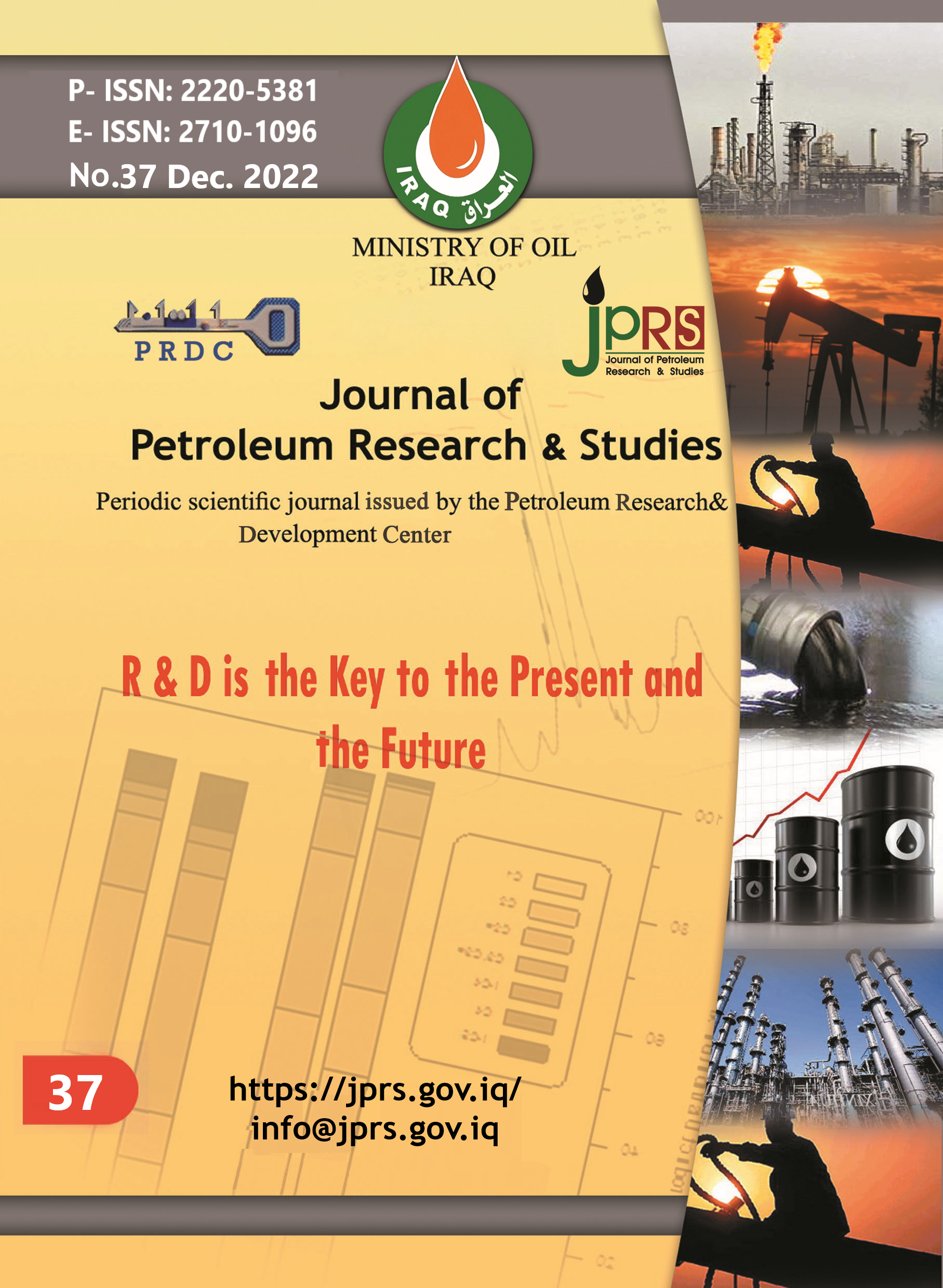Structure Analysis of Sa’adi Reservoir in X Supergiant Oilfield, Southern Iraq
DOI:
https://doi.org/10.52716/jprs.v12i4.520Abstract
The study area is located in southern Iraq in Mesopotamia hydrocarbon province. It’s part of supergiant liner anticline that extends from south to north, South Rumaila, North Rumaila, West Qurna-1, and West Qurna-2. The major fold oriented north-northwest and extends approximately 120Km. All available data was integrated and used in this study to support a better image of the subsurface of the Sa'adi structure. The Sa'adi reservoir in the study area is considered as a secondary reservoir. Therefore, a three-dimensional seismic survey, and seven VSPs, in addition, to well tops that drive from a set of well logs are used in this study.
The three-dimensional seismic interpretation and subsurface structure maps of both Tops of Sa'adi and Tanuma formations were performed by Halliburton software (OpenWorks, DecisionSpace Geoscience, and Seismic Analysis). The structure maps of Lower Sa'adi_I and Lower Sa'adi_II have been created based on well tops. A set of well logs (Quad combo) were used to identify the well tops in more than four hundred wells that penetrated the Sa'adi reservoir and distributed over the study area using Geolog software. The structure maps of Lower Sa'adi_I and Lower Sa'adi_II in addition to the cross-sections were set up by Petrel 2018 (Schlumberger software). The study gives highly accurate structure maps of top of Upper Sa'adi, top of Lower Sa'adi_I, top of Lower Sa'adi_II, and top of Tanuma formations. The Sa'adi structure in study area is classified as asymmetrical, non-cylindrical, horizontal, antiform, brachy, gentle anticline.
References
R. A. Abdullah, K. Al-Jorany, F. Mohsin, A. Imad, and M. Abdulrazaq, “Edge Water Breakthrough in each of the major zones within Mishrif reservoir in West Qurna phase 1”, Journal of Petroleum Research and Studies, vol. 8, no. 3, pp. 79-96, Sep. 2018.
Lisle, R. J., Geological structures and maps: A practical guide. Butterworth-Heinema, 2020.
Van der Pluijm, B. A., & Marshak, S., Earth structure. New York, 2004.
Dawd, T. J., Hussein, M. K., “Updated Geological Study of Sa’adi Formation in West Qurna Field”, South Oil Company, Department of Geology, Basrah, 1992.
, R. A. Abdullah and M. Al-Shahwan, “Structural Geometry Analysis of Khasib Formation in Supergiant Oilfields, Southern Iraq”, The Iraqi Geological Journal, (1.54): p.54-6, 2021.
M. Bacon, R. Simm, T. Redshaw, “3-D seismic interpretation”, Cambridge University Press, 2007.
Halliburton, Decision Space Geoscience 10ep.3. Fundamentals of Geophysics, Pakistan Petroleum Limited (PPL), 2017.
A. Al-Ali, K. Stephen, A. Shams, A. March, “Improved Carbonate Reservoir Characterization: A Case Study from a Supergiant Field in Southern Iraq”, In SPE Middle East Oil and Gas Show and Conference, Society of Petroleum Engineers, 2019.
S. Henry, H. Geolearn, “Understanding the Seismic Wavelet”, Search and Discovery Article, 40028, 2001.
Halliburton., DecisionSpace Geoscience 10ep.3, Fundamentals of Geophysics, Pakistan Petroleum limited (PPL), 2017.
A. K. Pandey, R. Kumar, M. Shukla, A. Negil, A. K. Tandon, “Seismic Velocity Model Building an Aid for Better Understanding of Subsurface a Case Study from Cambay Basin. India”, In 10th Biennial International Conference and Exposition, pp. 408, 2013.
M. S. Al-kubaisi and A. A. Lazim, “Structural study of Nahr Umr Oil Field in Southern Iraq”, Journal of Petroleum Research and Studies, vol. 6, no. 2, pp. 27-46, Jun. 2016.
M. J. Haider, “Structural Geology of Rumaila Oilfield in Southern Iraq from Well Logs and Seismic Data”, MSc. Thesis (unpublished), Department of Geology, College of Science, University of Basrah, 2018.
Downloads
Published
How to Cite
Issue
Section
License
Copyright (c) 2022 Rafea Alabdulaziz, Muwafaq F. Al-Shahwan, Maysaa A. Abdulhameed

This work is licensed under a Creative Commons Attribution 4.0 International License.














